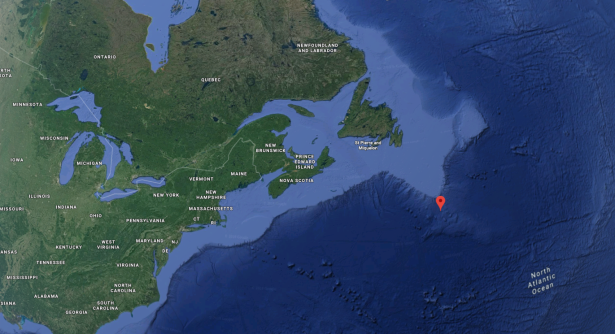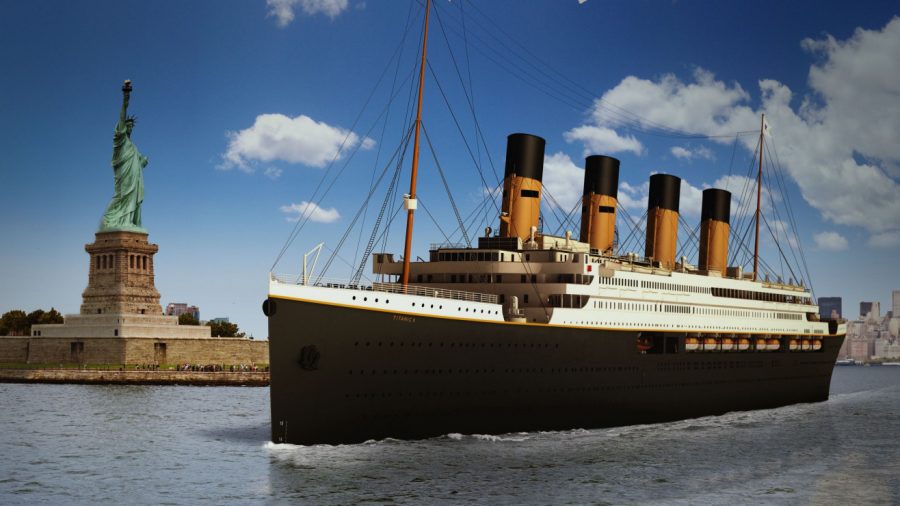Over a century ago in April, 1912, the Titanic crashed into an iceberg, split into two, and went down to the North Atlantic Ocean.
It was one of history’s most tragic maritime incidents. Over 1,500 lives, passengers and crew, were lost to the waves, together with what was then the largest passenger ship in the world.
Numerous attempts would be made in the decades following to locate the wreckage, lying somewhere 12,000 feet below the surface.
Now, thanks to Google Maps, any internet user can track down the exact site of the sinking and reminisce on the most famous ship in history.
The location is 1,250 miles from New York, the destination of the “ship of dreams” on its maiden voyage. It was also just a bit over 13 miles away from the inaccurate coordinates that the Titanic sent out in its emergency signal (pdf).

A Message Lost
It was an accumulation of human and technological factors going wrong that led to the tragic fate of the once-considered “unsinkable” luxury liner, and a crucial one was the unheeded warnings.
On the night when the collision occurred, the Californian, the closest ship to Titanic at the time, sent several warnings to the other ship alerting them about the proximity of the iceberg, but were told to “shut up,” according to Titanic Facts. The telegraph operator on Californian then turned off the radio and went to bed, cutting off Titanic from its most accessible aide as it came closer to its doom.
Only hours after the tragedy would the Californian arrive to rescue the survivors.
#OnThisDay: 20th April 1912
Lapland departed from New York’s Pier 61 for England with 172 survivors of Titanic’s crew, along with 1,927 sacks of the US Mail, intended for Titanic’s return voyage.
Read more >> https://t.co/LFmVci7l7A pic.twitter.com/9wRFYp40O1
— Titanic Belfast (@TitanicBelfast) April 20, 2019
Remembering #Titanic on the 107th anniversary of her loss #TitanicRemembranceDay
The White Star liner sank #OnThisDay in 1912, after colliding with an iceberg in the waters of the Atlantic.???? Olympic and Titanic together for the last time. March 1912. National Museums NI. pic.twitter.com/ZmHTcYMGFx
— Titanic Hotel Belfast (@TitanicHotelBel) April 15, 2019
Titanic today
With a cost of $7.5 million to build at the time (an estimated $400 million today), the British Titanic was the epitome of lavish travel in its day. The site where the shipwreck lies today has become a UNESCO world heritage site. The U.S. travel company OceanGate is offering weeklong expeditions for those with deep-lined pockets to dive into the Atlantic Ocean, starting from summer of 2019, at a price of $125,000.
For regular tourists, Titanic-themed museums are available to explore the thousands of artifacts recovered—including two in Branson, Missouri and Pigeon Forge, Tennessee—both owned by John Joslyn.
The @TitanicBelfast was a really incredible tour, the whole family enjoyed it. Thank you for a great experience #rawireland #loveireland #Irelandaily #inspireland #igersireland #discoverireland #ireland #titanicbelfast #topirelandphoto #tourismireland #visitireland #belfast pic.twitter.com/2sm2BQky9A
— Eamon Sherry (@eamon_sherry) April 30, 2019
The opportunities to see the ship in person might not last, as a rare kind of bacteria is eating away the metallic hull, potentially breaking down the remnants into fine iron dust in 10 to 15 years.
Before that happens, a replica of the Titanic is set to complete the former ship’s unaccomplished voyage as early as the year 2022.
Construction is well underway on the $500 million Titanic II ocean liner in a shipyard in China and it is on track to make its maiden voyage in the year 2022.
The Titanic II is operated by the Brisbane-based Blue Star Line company, a name similar to the 1912 Titanic’s White Star Line shipping company. It plans to follow the same path of the Titanic in summer, traveling between Dubai in the United Arab Emirates, Southampton in the United Kingdom, and finally New York City in the United States.

